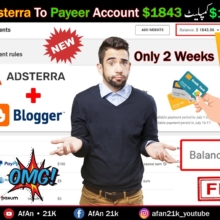On the Rise: Cincinnati’s Community Learning Centers [Episode 1]
(gentle, serious music) – Tell me about the school,
what am I seeing here? What’s this? My name is Darlene Kamine,
and I’m the executive director of the Community Learning
Center Institute. Teeth, up on the top of the roof? – [Child] Yeah! – Yeah! Oh, that’s interesting
that you call it teeth! For the past 10 years,
the institute has been an independent nonprofit,
dedicated to the creation, promotion, and continued advancement of community learning centers. Cincinnati Public Schools
developed this concept of what others know to
be community schools, which is essentially a hub of partnerships that are co-located or in
some other way selected and connected to the school to address all of the conditions that are necessary for learning, and we refer to those as
community learning centers.
And at this point, in Ohio, community learning centers
are primarily connected to traditional public schools. (slow, serious music) In 1970, in Cincinnati, we had 90,000 students in
Cincinnati Public Schools. About 70% of those students
were middle class and above. There were also about 500,000 people living in the city of Cincinnati, so we were at a very high
point, and we were thriving. By 1999, we had 45,000
students in Cincinnati Public, so about half in 29 years. And of that 70%, it was a mirror image, 70% below the poverty line. And, again, the
inextricability of the linkage between the success of schools and the success of the community, we lost 200,000 people from
the city of Cincinnati. We were, as a city, and as a school district, in great crisis. The Cincinnati Public
Schools tried very hard to come up with reforms. The new curriculum, computers,
anything that would create maybe excitement and a belief
that things were changing. And the district
found no results because trust had been lost between the community and
the public school system. When we started developing
community learning centers, it was in connection with the rebuilding of all of the schools as
the result of a mandate from the Supreme Court of Ohio that all schools needed to be upgraded, to be safe, warm, and dry, they were in very poor condition.
And at the time, Cincinnati
Public Schools passed a policy that every neighborhood, every school, would have the opportunity
to create their school as a community learning center, regardless of their academic functioning, regardless of socioeconomics. The idea was an opportunity to be able to create every school as a center of its neighborhood. The city of Cincinnati is comprised of 52 distinct neighborhoods. There is typically at least one school in each neighborhood, each
with its community council, and really, its own culture. We refer to those neighborhoods often as each neighborhood is its own country. But it is all
under the city of Cincinnati. My background is as an attorney, so I didn’t have a
professional planning background, but I approached it with
the very same expectation that people in the community, what would I want if this were my child? What would I want if this
were my neighborhood? And it just was being a very honest, genuine kind of relationship building, one-by-one, with people
in the neighborhood, that helped me bring
other people to the table, and ultimately, that process became, and is still to this day,
a very very unique hallmark of the foundation for community
schools in Cincinnati, or community learning
centers in Cincinnati.

(inspirational music) There are two important
elements of sustainability for the community learning centers that we’ve developed in Cincinnati. One is grounded in community engagement. The amount of time, heart, and work that the entire community
has been involved in within each one of our
community learning centers sustains it. And so making sure that
you have all of those folks that are always genuinely connected and owning their community learning center will sustain that no
matter what the change is in all of the other kinds of political and administrative
hierarchies there might be. Secondly, financial sustainability. We knew from the very beginning that the reason that public education went into so many dips is because there was an inconsistency in funding, so sometimes there would be a tax levy, and sometimes there wouldn’t, and sometimes the political winds would shift funding, and
you would be without. So we knew that we had to build a system where all of these supports,
and all of these partnerships, and everything that wasn’t
strictly teachers, books, the building itself,
would be taken care of by other natural revenue streams.
So what can you see now? – [Teacher] Can you see everything? – Can you see, (laughing)
yeah, that’s wonderful! You look wonderful, and most importantly, you can see wonderfully! I think the process of remaking or improving public education begins and belongs
to the public themselves. And I think that perhaps where
we’ve gone off the rails, a little bit, is thinking
about what’s good for them, good for other people. And I have never, ever been disappointed by the wisdom, by the insight, by the passion of the people, that’s what community engagement is about.
Natural Synergy $47.⁰⁰ New Non-Invasive Alternative. To Electro-Acupuncture, Producing Astounding Results… Self-Application Is Easy, Rapid Response. You’re about to discover how both chronic and acute pain, skin conditions, migraines, and hundreds of ailments all stem from the same root cause. Yin Yang Ailments such as ➯➱ ➫ ➪➬ I want to give people an affordable option to kill pain naturally… without the fear of addiction. Treating the root cause of common diseases And reducing the need for harmful prescriptions that come with problematic side effects. So you’ll get everything for just $47.⁰⁰ That’s it.











